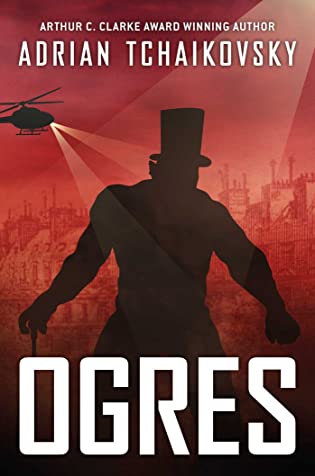 Ogres by Adrian Tchaikovsky
Ogres by Adrian Tchaikovsky Format: eARC
Source: supplied by publisher via Edelweiss
Formats available: hardcover, ebook, audiobook
Genres: dystopian, fantasy, science fiction
Pages: 144
Published by Solaris on March 15, 2022
Purchasing Info: Author's Website, Publisher's Website, Amazon, Barnes & Noble, Kobo, Bookshop.org, Better World Books
Goodreads
A bleak glimpse of a world of savage tyrants, from award-winning author Adrian Tchaikovsky in a beautiful signed, limited-edition hardcover.
Ogres are bigger than you.Ogres are stronger than you.Ogres rule the world.
It’s always idyllic in the village until the landlord comes to call.
Because the landlord is an Ogre. And Ogres rule the world, with their size and strength and appetites. It’s always been that way. It’s the natural order of the world. And they only eat people sometimes.
But when the headman’s son, Torquell, dares lift his hand against the landlord’s son, he sets himself on a path to learn the terrible truth about the Ogres, and about the dark sciences that ensured their rule.
My Review:
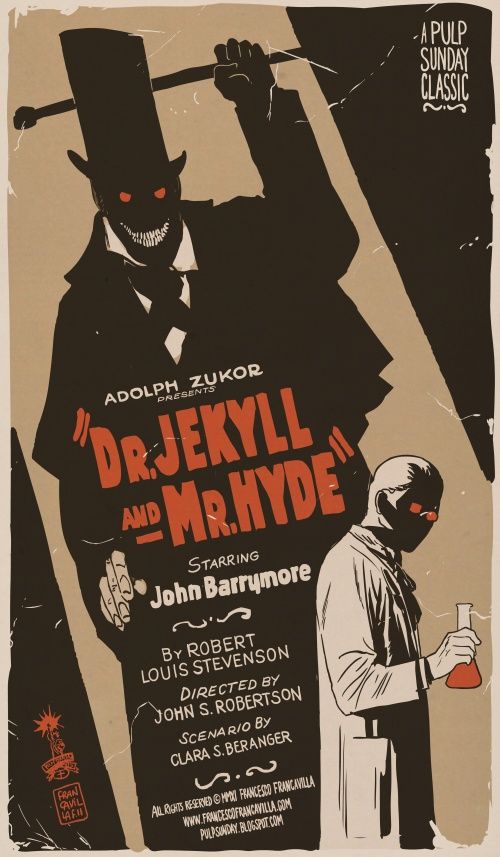 When I first saw the cover for Ogres, the image reminded me an awful lot of Mr. Hyde – as in Dr. Jekyll and Mr. Hyde. So I went looking for popular images and the resemblance is a bit uncanny – except for that helicopter in the background of the book’s cover.
When I first saw the cover for Ogres, the image reminded me an awful lot of Mr. Hyde – as in Dr. Jekyll and Mr. Hyde. So I went looking for popular images and the resemblance is a bit uncanny – except for that helicopter in the background of the book’s cover.
Now that I’ve read Ogres, I’ve come to the conclusion that the image is kind of a tease – or a spoiler. Perhaps a bit of both. Because Ogres is very much a “we have met the enemy and he is us” kind of story, complete with that same AHA! moment in Robert Louis Stevenson’s classic, that the monster perceived as being “the other” is really the self within. Or in this case a possible self that can be released under the right – or wrong circumstances.
As we experience this tale through the eyes of Torquell, the spoiled son of the village headman who both envies and resents the wealthy and all-powerful ogres, this seems like a rather typical hero’s journey. Torquell manages to kill one of the supposedly unbeatable ogres who rule his world and everyone is punished for it.
Evil overlords are the same all over.
But that’s when the story starts turning a corner into “Come to the dark side, we have cookies.” Literally. The ogre who “owns” Torquell starts feeding him the same food that the ogres eat – and he becomes bigger, stronger and more aggressive – just like they are.
Those cookies are baked – not just with ingredients that are forbidden to the downtrodden serfs – but with fruit from the tree of knowledge of good and evil. An evil that Torquell recognizes when he tastes it – even as he plots to steal the knowledge of the ogres for himself.
That could have been the end of the story. But it’s not – and that’s what made it so much more fascinating than the all-too-typical hero’s journey it set out to be.
Escape Rating A-: That’s where this story, which up until this point has read as a fantasy, flips one of its switches and turns into science fiction. Because the ogres are Mr. Hyde, who once hid inside the more mild-mannered Dr. Jekyll. All it takes is a bit of genetic engineering – and a whole lot of generations to bake the system in place.
Then, just as the reader thinks they know where the story is finally going – a second switch is flipped. A switch that makes you rethink everything that came before. Because this IS a hero’s journey after all – just not the hero the reader thought it was. Not at all.
What made this story so compelling is that as much as I totally saw the first twist coming a mile away – I didn’t see the second one at all until it happened. Torquell is led very carefully along the path to discover the truth about the ogres, so once he starts learning about the history of his world that truth becomes obvious fairly quickly.
But that’s where things get interesting. Because then it starts to look a lot like a power corrupts tale, as Torquell is seduced by the equivalent of the dark side of the force that governs his world. Torquell rises – and then Torquell falls – but the story still manages to have a triumphant ending. Just not the one the reader thought they were going to get.
I usually say that books like this walk like a duck and quack like a duck because they read like fantasy right up until the point where we learn that they were science fiction all along. In the end, this one walked like a duck and quacked like a duck but somehow managed to be a platypus. It wasn’t what I expected, then it wasn’t what I expected again, and at the very end managed to surprise me yet one more time. That’s a lot of surprising plot twists to pack into one novella!

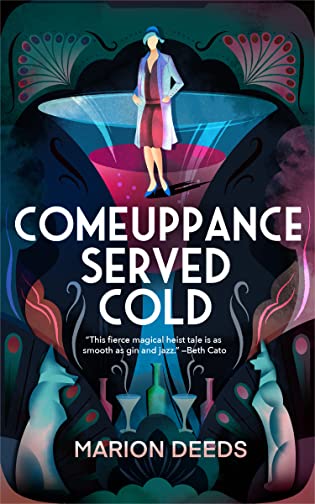 Comeuppance Served Cold by
Comeuppance Served Cold by 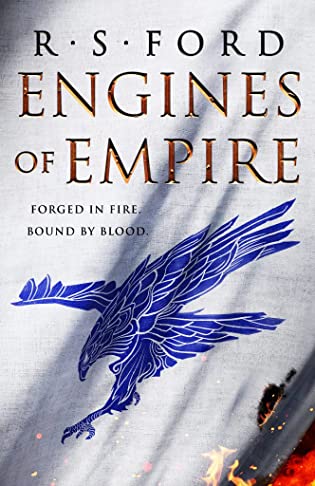 Engines of Empire (The Age of Uprising, #1) by
Engines of Empire (The Age of Uprising, #1) by 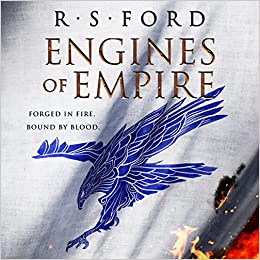
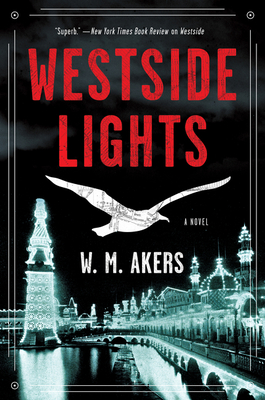 Westside Lights (Westside #3) by
Westside Lights (Westside #3) by 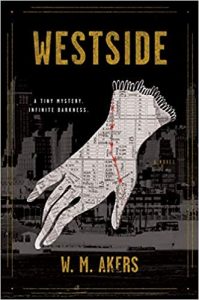 Westside is a place caught between “never was” and “might have been”. It’s a kind of road not taken made manifest in a world where “something” happened at the turn of the 19th century into the 20th that cleaved the west side of New York City away from not just the rest of the city – or even the rest of the country – but from reality itself.
Westside is a place caught between “never was” and “might have been”. It’s a kind of road not taken made manifest in a world where “something” happened at the turn of the 19th century into the 20th that cleaved the west side of New York City away from not just the rest of the city – or even the rest of the country – but from reality itself.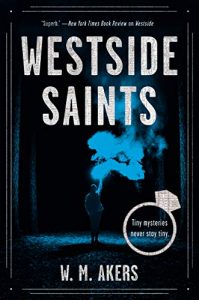 Escape Rating A: Everything about the Westside is weird and weirdly fascinating. Also just weird. Did I say weird? The whole idea that part of NYC could just separate itself into another reality is weird, fascinating and a whole bunch of other bizarre things.
Escape Rating A: Everything about the Westside is weird and weirdly fascinating. Also just weird. Did I say weird? The whole idea that part of NYC could just separate itself into another reality is weird, fascinating and a whole bunch of other bizarre things.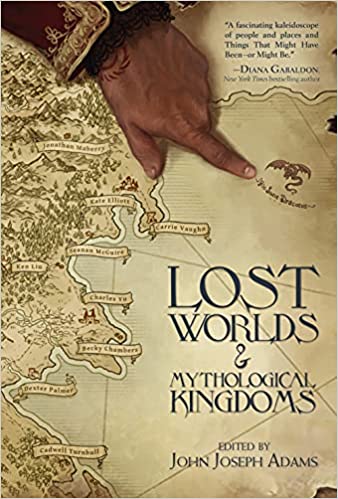 Lost Worlds and Mythological Kingdoms by
Lost Worlds and Mythological Kingdoms by 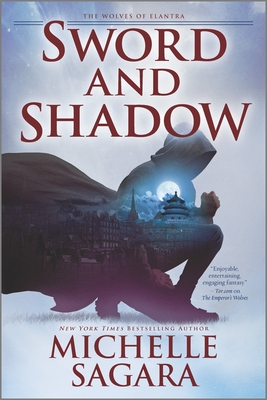 Sword and Shadow by
Sword and Shadow by 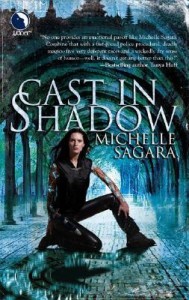 Once upon a time, there was a book. I remember reading the first book in the
Once upon a time, there was a book. I remember reading the first book in the 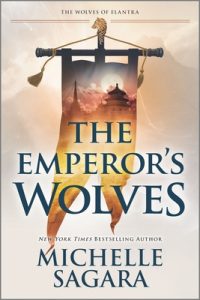 Escape Rating A+: I know, I haven’t said much about this story yet. And there are reasons for that, all of them tied up in the events here and the things that happened after. There’s always been an impression that whoever and whatever Severn was, he was definitely more than he seemed.
Escape Rating A+: I know, I haven’t said much about this story yet. And there are reasons for that, all of them tied up in the events here and the things that happened after. There’s always been an impression that whoever and whatever Severn was, he was definitely more than he seemed. Readers who have loved the
Readers who have loved the 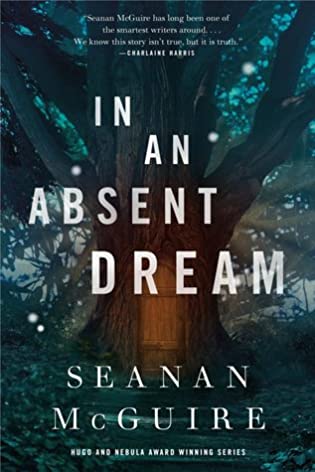 In an Absent Dream (Wayward Children, #4) by
In an Absent Dream (Wayward Children, #4) by 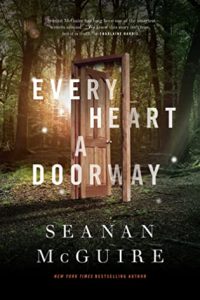 Escape Rating B+: Everything I picked up this week struck me wrong in one way or another. Sometimes very wrong as
Escape Rating B+: Everything I picked up this week struck me wrong in one way or another. Sometimes very wrong as 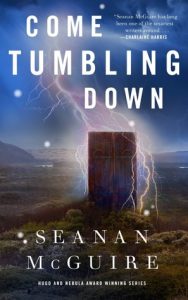 This series is special and awesome in a way that’s hard to describe. It’s as though the dreams of all of us who were bookish misfits as children dreamed all our dreams only to see those dreams come true in the form of nightmares. Some gifts come at just too high a price – and sometimes we’re desperate enough to pay that price anyway.
This series is special and awesome in a way that’s hard to describe. It’s as though the dreams of all of us who were bookish misfits as children dreamed all our dreams only to see those dreams come true in the form of nightmares. Some gifts come at just too high a price – and sometimes we’re desperate enough to pay that price anyway.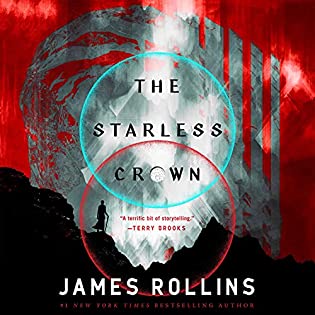 The Starless Crown (Moon Fall, #1) by
The Starless Crown (Moon Fall, #1) by 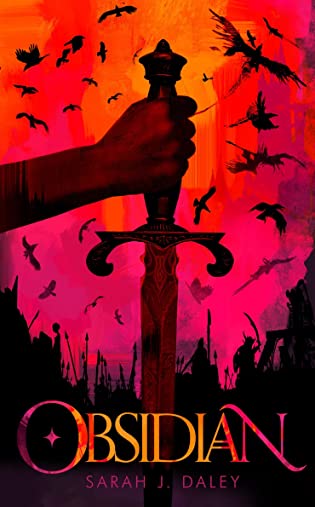 Obsidian by
Obsidian by 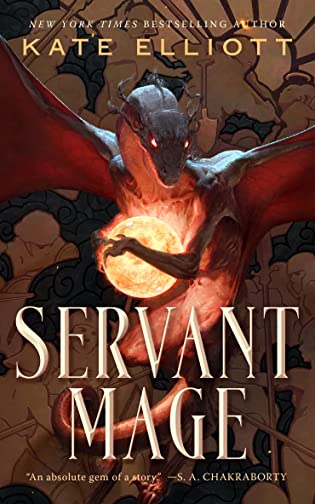 Servant Mage by
Servant Mage by